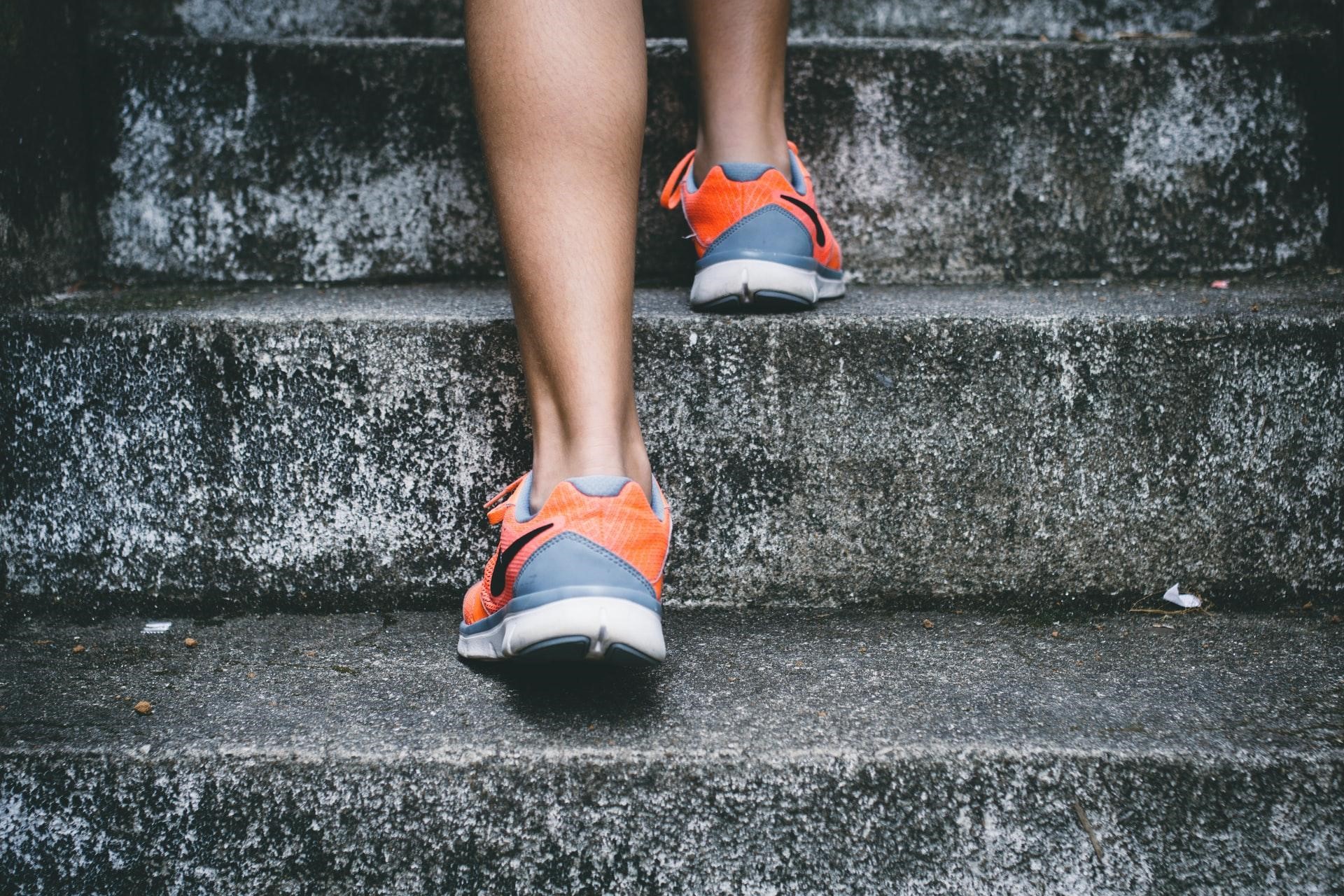Curious about how long it takes for a pain-free return to running after injury? Then you’ve come to the right place.
In the world of running, injuries can often feel like unexpected roadblocks on our journey. They bring with them a mix of frustration and impatience, especially for devoted runners who long to hit the pavement or trail once again.
Whether it’s a sprained ankle, runner’s knee, or a more serious setback, the path to recovery can be shrouded in uncertainty.
For many injured runners, a common question lingers in their minds: “When can I safely return to running?”
Ponder no more.
In this article, we’ll embark on a journey together to shed light on the typical time frames for a pain-free return to running after various common injuries.
Sounds like a good idea?
Then let’s get started.
How Long Should it Take for a Pain-Free Return To Running After Injury?
The road to recovery after an injury can be as unique as the design of your favorite running shoes. There’s no one-size-fits-all answer to the question, “How long should it take to make a pain-free return to running?” It’s a bit like asking, “How long is a piece of string?” – it all depends.
For some lucky runners dealing with minor injuries, a mere couple of weeks might be sufficient to get back on track. But as we all know, life doesn’t always unfold as smoothly as a walk in the park.
Now, if you’re facing a more serious injury, expect a more extended journey to recovery. We’re talking about three months or potentially even longer. I know that sucks but life in unfair, sometimes.
Overall, I can think of six main variables that impacts how fast your return to running post-injury. These include:
- Your Pre-Injury Fitness Level: Were you already setting personal records and achieving running milestones, or did you enjoy leisurely jogs? Your starting point matters.
- Type and Severity of the Injury: The tougher the opponent, the more time it might take to overcome it.
- Duration of the Layoff: How long have you been out of the running game? The longer the hiatus, the more patience you’ll require during your road to recovery.
- Fitness Background and Experience: Whether you’re a seasoned runner or just beginning, your past experiences play a role in your future running success.
- Cross-Training: Consider alternative workouts as your trusty sidekicks on this journey. They help you stay in shape while you recover.
- Quality of Treatment and Prevention: Listen to the advice of your medical professionals; they possess the expertise to set you on the right path to recovery.
Personal Example
A couple of years back, I was on top of my running game, crushing miles like a champ.
But then, out of nowhere, that sneaky Achilles Tendinitis sneaked up on me. Ouch!
Talk about a major setback. Suddenly, I couldn’t run anymore without pain being my constant buddy.
Here’s where I made my first rookie mistake – I thought I could tough it out, that it would magically go away. So, I kept running, pretending that everything was peachy. But guess what? Ignoring the issue only made it worse.
Instead of taking a short break, I found myself in a forced running hiatus for months! Yeah, you can imagine the frustration and longing to hit the pavement again.
Finally, I had to come to terms with reality and make a game-changing decision. I decided to put on my responsible runner hat and take a proactive approach. No more playing tough; it was time to get serious about recovery.
So, I listened to the expert advice, followed my doctor’s orders, and stuck to a smart treatment plan. Physical therapy became my new best friend, and I religiously followed their guidance. I also added some cross-training to the mix, which turned out to be a life-saver. Swimming and low-impact spinning became my secret weapons to maintain my fitness without aggravating my injury.
It wasn’t an overnight success, but little by little, the pain subsided, and my hope for a comeback grew stronger.
After weeks of dedicated rehab, I finally laced up my running shoes again. Can you imagine the joy I felt when I hit the road, pain-free, after months of being sidelined? It was like rediscovering the pure bliss of running all over again.
Phases of Injury Recovery
Dealing with an injury? Then wrapping your head around the process of injury recovery is key. This process can be divided into three distinct phases: the acute phase, the repair phase, and the remodeling phase.
Each phase plays a crucial role in your overall healing process and has its own timeframe and features.
Let me break down each.
Acute Phase
Time Frame: This initial phase typically lasts from a few days to a week.
Characteristics: The acute phase is marked by inflammation and pain. It’s your body’s immediate response to injury, acting as a signal to slow down and initiate healing. Swelling, redness, and heat in the affected area are common.
Runner’s Focus: The main goal during this phase is to reduce inflammation and prevent further damage. This often involves the RICE protocol (Rest, Ice, Compression, Elevation), along with possible medical evaluation for severe injuries.
Repair Phase
Time Frame: This phase can last from about 48 hours to 6 weeks post-injury.
Characteristics: During the repair phase, your body starts mending the injured tissue by laying down new collagen fibers. This phase is characterized by a decrease in inflammation and the beginning of tissue repair.
Runner’s Focus: Controlled, gentle movements can often be introduced in this phase, depending on the injury’s severity and the doctor’s advice. The aim is to regain mobility and prevent stiffness without overloading the healing tissues.
Remodeling Phase
Time Frame: This is the longest phase, potentially lasting from 3 weeks to several months.
Characteristics: The remodeling phase involves the strengthening and maturation of the new tissue. The collagen fibers laid down during the repair phase start to align according to the stresses placed upon them, gradually regaining strength and flexibility.
Runner’s Focus: Gradual reintroduction to running and regular strength training is crucial. Rehabilitation exercises become more intensive, focusing on restoring full function. It’s important to progress slowly to avoid re-injury.
The Importance of Initial Rest
When it comes to running injuries, what you do right after the onset drastically impact your healing speed. Rest, especially immediately following an injury, helps prevent further damage and kickstart the recovery process.
Like I had to learn the hard way, continuing to run on an injured area can exacerbate the injury, turning a minor issue into a more serious one. It’s like continuing to drive a car with a flat tire – it only leads to more damage.
What’s more?
Rest helps in reducing inflammation and pain, which are the body’s initial reaction to injury. It’s a natural protective response, signaling the body to slow down and heal.
Factors Influencing Recovery Time
As you can already tell, recovery time can vary widely, influenced by several key factors. Let me break down them for you.
- Different Injuries, Different Timelines: The nature of the injury is a significant determinant of recovery time. For example, a mild muscle strain may heal faster than a severe ligament tear or a stress fracture.
- Severity Matters: The severity of the injury plays a crucial role. A minor sprain might require just a few days to a week, while a major one could need several weeks or more for complete healing.
- Age-Related Recovery: Older runners may find their recovery process slower than younger ones. This is due to natural age-related changes in muscle and tissue repair capabilities.
- Impact of Overall Health: Your general health also impacts how quickly you recover. A fit and healthy body with a strong immune system typically recovers faster from injuries.
- Re-Injury Concerns: If you’ve had previous injuries, especially to the same area, this might affect your recovery time. Previous injuries can sometimes lead to weaknesses that make you more susceptible to future injuries.
- Role of Nutrition: Nutrients like protein, vitamins C and D, and calcium are crucial for tissue repair and bone health. A well-balanced diet can significantly speed up the healing process.
Assess Yourself – How To Progress
So, you’re itching to hit the ground running again, huh? Let’s talk about how to check in with yourself and keep moving forward without tripping up.
First off, avoid dwelling on how fit you were before any injuries. I know, it’s tempting to look back and compare, but honestly, that’s just going to hold you back. Forget about those old benchmarks and focus on where you’re at right now.
Here’s the deal: take things slow and steady. Before you ramp things up, make sure you’re not feeling any discomfort or pain after your runs. Your body will let you know when it’s good to go a bit harder—listen to it!
And hey, don’t forget to celebrate every win, no matter how small. Added an extra minute to your run? Reached a new distance? That deserves a high-five! You’re moving forward, and that’s something to be happy about.
One last thing—leave your
ego at the door. It’s so easy to get carried away and push yourself too much, but try to resist that urge. Be kind to yourself and focus on building up gradually. This journey is all about you getting better at your own pace, not proving anything to anyone else.Top of Form
What To Examine When Planning to Return to Running After Injury?
Thinking about lacing up those running shoes again? Then I urge to make you’re all set for a successful return.
First up, flexibility. Make sure those joints are moving smoothly and you’ve got back your full range of motion near the injury. No one likes feeling stiff or tight, right? A good trick is to compare the injured side with the uninjured one to see how you’re doing.
Now, onto swelling. Your injured area should be calm and cool, without any swelling. If there’s still some puffiness, it might be wise to wait a bit longer before hitting the pavement. Patience is key here.
Stability is another big one. You want to feel solid on that injured part – no shaking or doubts. Feeling a bit shaky? Might be a sign to hold off on running for now.
Just a heads up, I’m not a doctor, so if you’re unsure, definitely talk to a healthcare professional. They’re the go-to for advice, especially for serious injuries like stress fractures or tricky ligament problems. Follow their advice closely.
Here’s a little test – the pain check. Give your injured part a test run (not literally, just yet). Try a brisk walk, stand on one leg for 30 seconds (channel your inner flamingo), and see how squats, lunges, and calf raises feel. No pain? That’s a good sign you might be ready to start running again!
Gradual Return to Running
I hate to state the obvious, but following injury, you should return to the sport with caution and patience. This helps avoid re-injury and ensure a successful comeback.
Not sure how? Follow these steps then:
- Begin with Walking: Start with brisk walking to test how your body responds to the impact. If this doesn’t cause pain, you can progress to a walk-jog routine.
- The Walk-Jog Method: Alternate between walking and jogging intervals. For example, jog lightly for 1 minute, then walk for 5 minutes. Gradually increase the jogging intervals and decrease walking time as your comfort and strength improve.
- Short Distances: Initially, focus on time rather than distance. Begin with short sessions (e.g., 10-20 minutes) and gradually increase the duration as you build endurance and strength.
- Low Intensity: Keep your pace slow and comfortable. Avoid hills and challenging terrains in the early stages of your return.




